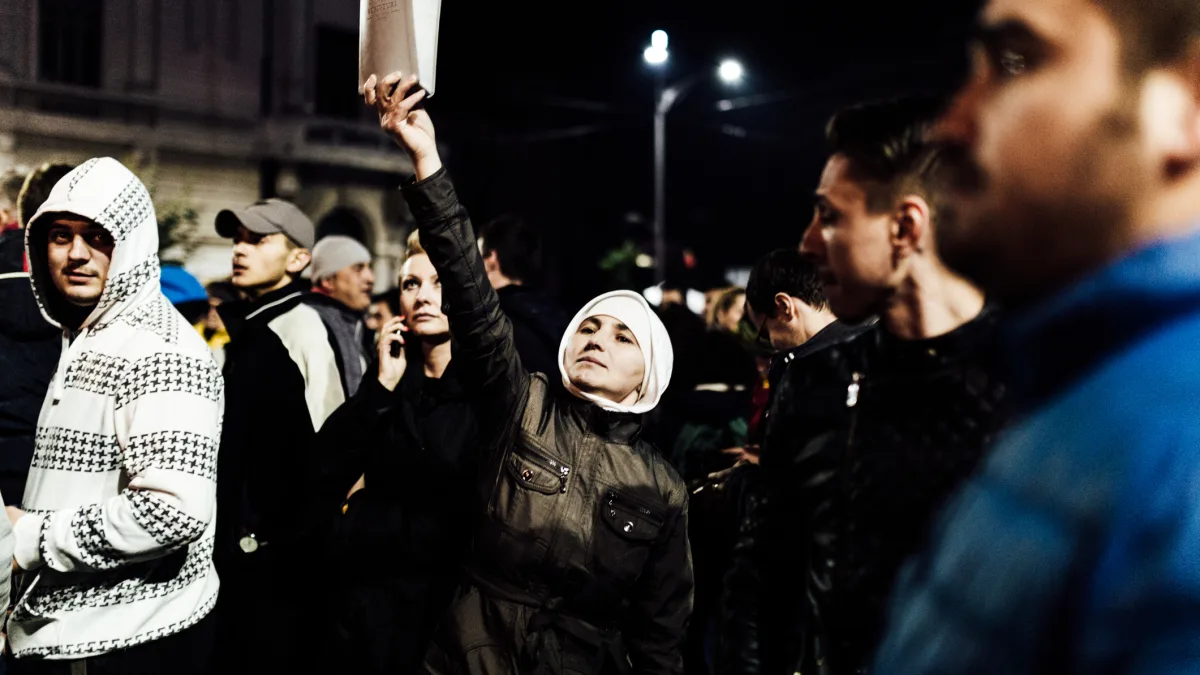The received wisdom about Generation Alpha—those born between 2010 and 2025—has been refreshingly predictable. Here, supposedly, was the ultimate digital generation: children who would swipe before they could walk, code before they could read, and live their entire lives through glowing rectangles.
Technology consultants and marketing gurus have spent years breathlessly describing a cohort so immersed in the digital realm that they would make their Gen Z predecessors look like Luddites.
How inconvenient, then, that Generation Alpha appears to be doing the opposite.
The great digital retreat
Far from embracing an ever-more connected existence, the youngest generation is staging what might charitably be called a quiet rebellion against their supposed digital destiny. The numbers, when examined closely, tell a rather different story than the one Silicon Valley would prefer.
Since 2021, there has been a 10 per cent drop in parents saying their child spends significant time on devices, and a seven per cent decline in online activity. More tellingly, Generation Alpha children are showing declining interest in watching television, particularly films and movies, and talking to friends online, whilst demonstrating increased enthusiasm for seeing friends in person and playing sports.
This shift extends beyond mere preference. When it comes to favourite school subjects, 12-15 year olds have replaced IT and computing with gym class and sports. Computing has tumbled from fifth to eighth place in their list of interests, displaced by decidedly analog pursuits such as holidays, vacations, and caring for animals.
The irony is delicious. Just as parents and educators were fretting about raising a generation of screen-addicted digital zombies, the children themselves began reaching for physical books, demanding cinema experiences, and rediscovering the radical notion that human interaction might be more satisfying than algorithmic engagement.
The paper paradox
Perhaps nowhere is this analog renaissance more surprising than in reading habits. Despite predictions that physical books would go the way of the gramophone, 72 per cent of Generation Alpha prefer reading physical books over digital formats—and this is a generation that spends 2.5 hours daily on digital devices.
Not the figures are without contradictions. Generation Alpha children read an average of 12 books per year and own an average of 50 physical books. However, 85 per cent of Generation Alpha parents report their children have difficulty focusing on traditional long-form book reading, especially when they’re physical books, not e-books—yet the children persist in choosing paper over pixels.
This preference for physical media extends beyond books. Two forms of entertainment stand out as becoming more important to children since the pandemic—cinema and podcasts, both experiences that notably avoid staring at mobile phone screens. Nearly a third of 8-11 year olds now visit cinemas monthly, whilst teens demonstrate impatience with streaming delays, preferring the communal experience of seeing films as soon as they are released.
The attention economy’s diminishing returns
The conventional narrative suggested that Generation Alpha would possess goldfish-like attention spans, constantly flitting between notifications and updates. Yet the data reveals a more nuanced picture. The average attention span of Generation Alpha is around eight seconds when engaging with digital content, identical to Generation Z—hardly the precipitous decline that pessimists predicted.
More intriguingly, task completion rates improve by 45 per cent when activities are broken into five-minute segments, suggesting that Generation Alpha has simply developed different optimisation strategies rather than inherently shorter attention spans. They appear to be applying lean startup methodology to childhood: failing fast, iterating quickly, and abandoning inefficient activities with admirable ruthlessness.
This pragmatic approach to attention management may explain their growing skepticism towards digital engagement. Why spend hours scrolling through algorithmically curated content when the same dopamine hit can be achieved more efficiently through physical activity or face-to-face interaction?
The wellness factor
The shift towards analogue activities coincides with growing health consciousness among Generation Alpha and their millennial parents. Only 27 per cent of Generation Alpha children meet the WHO’s recommended 60 minutes of daily physical activity, a statistic that has prompted both concern and action.
There has been a 10 per cent rise in Generation Alpha children worried about getting ill since 2021, suggesting a generation acutely aware of the physical costs of sedentary, screen-based lifestyles. The response has been predictably practical: if digital devices contribute to health problems, the obvious solution is to spend less time with them.
This health-driven motivation differs markedly from previous generational reactions against technology, which tended to be philosophical or aesthetic in nature. Generation Alpha’s approach is refreshingly utilitarian: they are not rejecting technology on principle, but rather optimising their time allocation based on measurable outcomes.
The influence economy’s limits
The data also reveals cracks in the much-vaunted creator economy’s hold over young minds. While 49 per cent of children say they trust influencers as much as family and friends when it comes to product recommendations, there are signs that this trust is becoming more selective and strategic.
Since 2021, there has been a 16 per cent decrease in 12-15 year olds saying they watch the news, and an eight per cent drop in teenagers expressing interest in environmental issues. This suggests not disengagement, but rather a calculated retreat from information overload—what researchers term ‘news fatigue’ and ‘climate fatigue’.
Generation Alpha appears to be developing sophisticated filtering mechanisms, consuming influencer content strategically rather than passively. They engage with creators who add tangible value to their lives whilst ruthlessly discarding those who merely occupy attention without providing utility.
The millennial parent effect
This analogue shift cannot be understood without considering the influence of Generation Alpha’s predominantly millennial parents. Having lived through the early internet’s Wild West period, experienced social media’s evolution from novelty to necessity, and witnessed the mental health costs of constant connectivity, millennial parents bring hard-earned wisdom to child-rearing.
Generation Alpha has experienced an upbringing different to that of past generations, with parents having internet resources readily available and adopting less traditional, more collaborative parenting styles. These parents are actively modeling balanced technology use, implementing screen-time limits, and prioritising offline family activities.
The result is a generation that views technology as a tool rather than an identity. Generation Alpha children use devices competently when necessary, but feel no compulsion to demonstrate their digital nativity through constant engagement. They are, paradoxically, more digitally mature than their predecessors precisely because they are less digitally dependent.
Strategic implications for business
The analogue shift presents both existential challenges and unexpected opportunities for companies across sectors. Businesses that assumed Generation Alpha would represent the apotheosis of digital engagement must now contend with consumers who view technology as a means rather than an end.
Technology companies face the most immediate disruption. Social media platforms banking on ever-increasing engagement metrics may find their growth trajectories flattening as Generation Alpha adopts more intentional usage patterns. Gaming companies, meanwhile, must compete not just with other digital entertainment but with revitalised interest in physical sports and outdoor activities.
The response requires fundamental rethinking of value propositions. Successful platforms will likely shift from attention harvesting to utility provision—offering tools that enhance rather than replace offline experiences. Companies like Duolingo, which gamifies learning rather than gaming itself, may prove more resilient than pure entertainment apps.
Retail and consumer goods companies must navigate increasingly hybrid preferences. Generation Alpha’s simultaneous embrace of e-commerce convenience and physical book ownership suggests demand for what retailers term ‘phygital’ experiences—seamless integration of digital efficiency with tangible satisfaction.
Successful retailers are already adapting. Nike’s strategy of combining app-based customisation with flagship store experiences, or Lego’s integration of digital building instructions with physical construction, demonstrates how brands can serve both digital natives and analog preferences simultaneously.
Educational technology providers face perhaps the greatest strategic challenge. The assumption that digital-first learning would appeal to digital natives has proven questionable. Instead, Generation Alpha appears to thrive in blended environments that combine technological efficiency with human interaction and physical manipulation.
Companies like Khan Academy have found success by positioning technology as a supplement to, rather than replacement for, traditional teaching methods. The lesson for EdTech: Generation Alpha wants better education, not necessarily more digital education.
Entertainment and media businesses must recalibrate distribution strategies. Generation Alpha’s preference for cinema experiences over streaming, and physical books over e-readers, suggests that predictions of purely digital consumption were premature.
Publishers reporting increased demand for physical books should invest in production capabilities that seemed obsolete just years ago. Cinema chains benefit from Generation Alpha’s impatience with release windows and preference for communal viewing experiences. Streaming services may need to reconsider simultaneous release strategies that cannibalise theatrical experiences.
Health and wellness sectors emerge as unexpected beneficiaries. Generation Alpha’s acute awareness of screen time’s physical costs creates opportunities for companies offering analogue alternatives. Sports equipment manufacturers, outdoor activity providers, and even board game companies are witnessing renewed demand.
When digital natives go analogue
What to make of this strange turn of events? The children who were supposed to herald the age of total digital immersion are teaching their parents the value of switching off. Their approach boils down to this: use YouTube to learn guitar chords, then put the phone away and actually strum the strings.
Consider what this means for institutions built on dodgy assumptions. Universities that spent millions on ‘digital learning environments’ may discover their students prefer scuffed lecture halls with blackboards. Employers designing offices around Slack channels might find Generation Alpha workers clamouring for whiteboards and actual water coolers where people gather to chat.
The consulting industry has naturally coined a term for this: ‘digital wellness’. But Generation Alpha seems less interested in wellness than in results. They have worked out that reading a physical book causes less eye strain than squinting at screens, that face-to-face conversation requires fewer follow-up texts, and that kicking a football burns more calories than watching football videos.
Their elders may find this revelation shocking, but Generation Alpha has reached a rather obvious conclusion: being good with technology does not mean being glued to it. The most sophisticated users, it turns out, know when to power down.
The much-vaunted ‘phygital’ future is evolving differently than Silicon Valley imagined. Rather than everything melding into seamless connectivity, Generation Alpha keeps digital tools in their place: handy for homework, useless for happiness.
Being born clutching smartphones, apparently, does not make one a smartphone devotee. Generation Alpha’s analog rebellion contains a lesson their screen-obsessed elders are slowly learning: in an attention economy, the most subversive act is simply looking away.
What emerges from this data is a generation that treats technology rather like a well-stocked toolbox: immensely useful when you need a hammer, but hardly worth admiring when the job requires a paintbrush. The consultants who spent years breathlessly explaining how Generation Alpha would live entirely through screens may have confused familiarity with preference.
This presents an awkward problem for companies that bet heavily on the myth of the permanently plugged-in child. Building a business model around capturing the attention of customers who have already moved on is rather like opening an ice cream parlour just as everyone discovers they are lactose intolerant. The market, as it turns out, has other plans.
Photo: Dreamstime.







